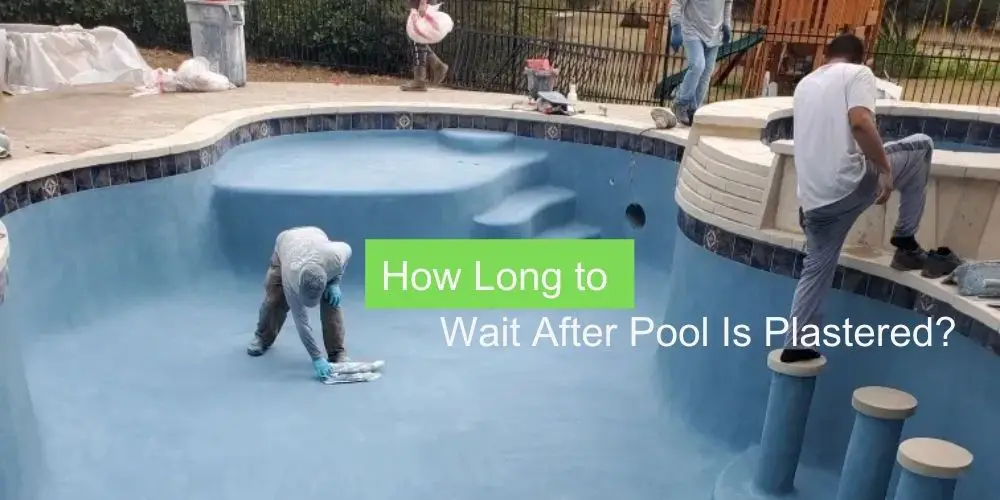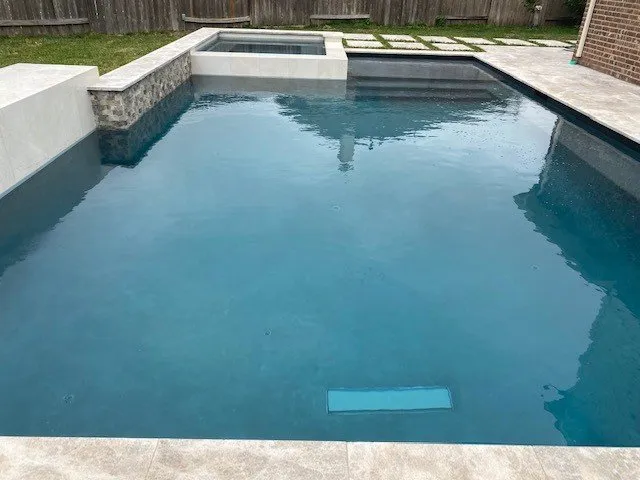
When you invest in a swimming pool, you want to ensure that it maintains its beauty and durability for years to come. One of the investment processes is the plastering of the pool surface.
Once the plastering is complete, you need to allow sufficient time for the plaster to cure properly before you can start using the pool.
This post will discuss how long you should wait after the pool is plastered and provide you with essential information to ensure the longevity of your pool.
5 Factors Affecting the Curing Time Of Your Pool
Several factors influence the curing time of your pool plaster. Here are the key factors that can affect the curing time of your pool
1. Type of Pool Plaster
The type of plaster used in your pool can impact the curing time. Different types of plaster, such as white plaster, colored plaster, or pebble finishes, have varying compositions and curing requirements. Each type may have specific instructions from the manufacturer regarding the ideal curing time.
2. Weather Conditions
The weather conditions during the curing process play a significant role. Moderate temperatures, typically between 50°F and 80°F (10°C and 27°C), are generally considered optimal for plaster curing.
Extreme heat can cause the water in the plaster to evaporate too quickly, potentially leading to cracking or improper bonding. Similarly, freezing temperatures can hinder the curing process. It’s important to consider the weather forecast and plan the plastering process accordingly.
3. Thickness of the Plaster
The thickness of the plaster layer can affect the curing time. Thicker plaster requires more time for the curing process to penetrate and harden the entire depth. Thinner plaster layers may cure faster but could be more susceptible to damage. Following industry standards for the appropriate thickness of the plaster will help ensure proper curing.
4. Humidity Levels
Humidity levels in the air can influence the curing time of your pool plaster. High humidity can slow down the evaporation of water from the plaster, potentially extending the curing period. Conversely, low humidity can cause the water to evaporate too quickly, leading to shrinkage and cracking. Maintaining a moderate humidity level can help promote proper curing.
5. Chemical Additives
Some pool plaster manufacturers offer additives or accelerators that can affect the curing time. These additives may be used to speed up or slow down the curing process based on specific requirements. If you’ve used any chemical additives in your pool plaster, following the manufacturer’s instructions regarding curing time is crucial.
How long Is Recommended To wait after Pool is plastered?
On average, waiting approximately 7 to 10 days before filling the pool with water is advisable. This waiting period allows the plaster’s chemical reactions to occur and ensures proper curing.
However, it is essential to note that this is a general recommendation, and the actual waiting time may differ based on the factors mentioned above.
Monitoring the plaster’s appearance and texture during the waiting period is important. Initially, the plaster may appear discolored or mottled, but it should gradually achieve a uniform color and smooth texture over time. This visual transformation indicates that the curing process is progressing as expected.
It is crucial to follow the manufacturer’s guidelines and consult with your pool contractor for specific recommendations regarding your pool’s waiting time.
Factors such as the type of plaster used, weather conditions in your area, and the thickness of the plaster can influence the ideal waiting time.
5 Signs of a Properly Cured Pool Plaster

Properly cured pool plaster is crucial for your swimming pool’s long-term durability and aesthetic appeal. After the recommended waiting time for curing has passed, it’s important to assess whether the plaster has fully cured before resuming regular pool use.
Here are some signs that indicate your pool plaster has properly cured:
1. Uniform Color
A properly cured pool plaster will have a uniform color throughout the entire pool surface. Initially, after plastering, you may notice some discoloration or mottling. However, the color should become consistent even as the curing process progresses.
2. Smooth Texture
Cured pool plaster will have a smooth and even texture when touched. It should not feel rough or gritty. Running your hand over the surface should give a consistent, pleasant sensation.
3. Strength and Hardness
Properly cured pool plaster will be strong and resistant to minor pressure. You can test its hardness by gently pressing your fingernail against the surface. If the plaster is fully cured, it should not leave any noticeable indentations or scratches.
4. No Chalky Residue
When the plaster has cured properly, there should be no chalky residue or lose particles on the surface. If you notice any chalkiness or dust-like substances, it could indicate improper curing or the presence of efflorescence, which requires attention and remediation.
5. Chemical Balance Stability
The curing process involves chemical reactions within the plaster. Once the plaster has cured, it should not significantly impact your pool’s water chemistry. Properly cured plaster will not cause imbalances or fluctuations in pH, alkalinity, or other chemical levels.
How to Maintain Your Pool After Plastering
Proper maintenance of your pool after plastering is essential to preserve the longevity and appearance of the newly installed plaster. Here are some important steps and tips to follow for maintaining your pool after plastering:
1. Water Chemistry
Maintaining balanced water chemistry is crucial for the health of your pool plaster. Test the water regularly for pH, alkalinity, calcium hardness, and sanitizer levels.
Follow the recommended ranges provided by your pool professional or refer to reliable water testing kits. Imbalanced water chemistry can lead to issues such as scaling, staining, or etching of the plaster surface.
2. Brushing the Pool
Regularly brush the pool walls and floor to prevent the buildup of dirt, algae, or other contaminants. Use a pool brush with nylon bristles to scrub the surface gently. Brushing helps keep the plaster clean and free from stains. Avoid using brushes with metal bristles, as they can scratch and damage the plaster.
3. Filtration and Circulation
Maintain proper filtration and circulation of water in your pool. Run the pool pump and filter system for an adequate duration each day to ensure efficient water circulation. This helps distribute chemicals evenly and removes debris from the pool water, reducing the risk of staining or discoloration on the plaster.
4. Cleaning and Skimming
Regularly clean the pool by skimming the surface to remove leaves, debris, and any other floating materials. Use a pool net or skimmer to keep the water clear and minimize the chances of debris settling on the plaster surface, which can cause staining or damage.
5. Avoiding Heavy Traffic
Minimize heavy traffic or excessive use of the pool during the initial weeks after plastering. This precaution allows the plaster to cure and harden without the risk of premature damage fully. Restrict activities that may cause excessive stress on the plaster, such as diving, jumping, or using sharp objects in the pool.
6. Monitoring Water Levels
Maintain proper water levels in your pool. Ensure that the water level is within the recommended range to avoid exposing the plaster to excessive air or causing damage to the pool equipment.
7. Professional Inspections
Schedule regular professional inspections of your pool to identify any potential issues or signs of damage. A pool professional can assess the condition of the plaster, detect any early signs of problems, and recommend appropriate maintenance or repairs.
Final Words
The general waiting period after pool plastering is around 7 to 10 days, although this can vary depending on various factors, such as the type of plaster used, weather conditions, and the expertise of the pool contractor. During this crucial curing period, resisting the temptation to rush and allowing the plaster to set and harden properly is essential.
By patiently waiting for the appropriate amount of time, you are allowing the plaster to cure and reach its optimal strength fully.
This will help minimize the risk of damage and enhance the longevity of your pool’s surface. Rushing into using the pool too soon can lead to premature wear and tear, which may result in costly repairs or even the need for re-plastering.

Hi, This is Josh. I am a former competitive swimmer and current fitness enthusiast.
I created this site to share my love of swimming with the world!
